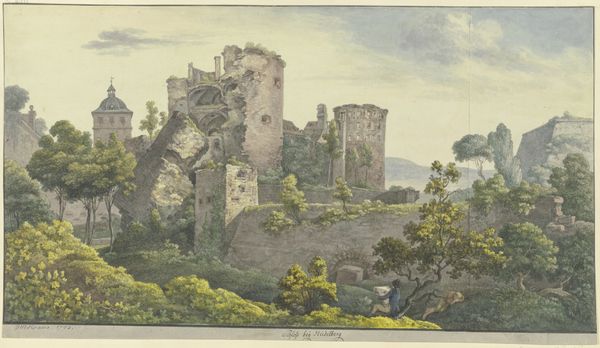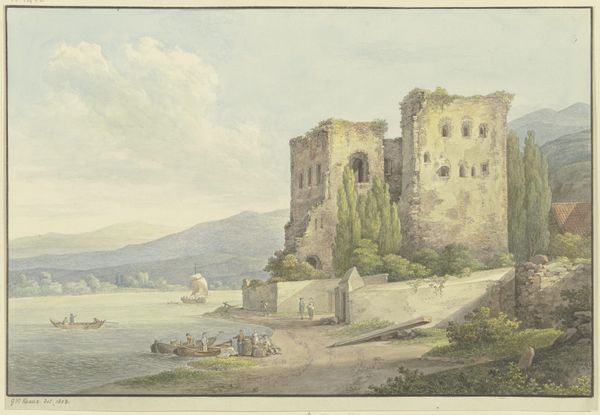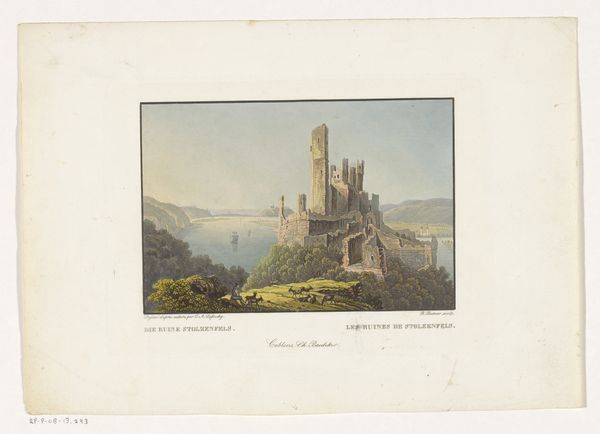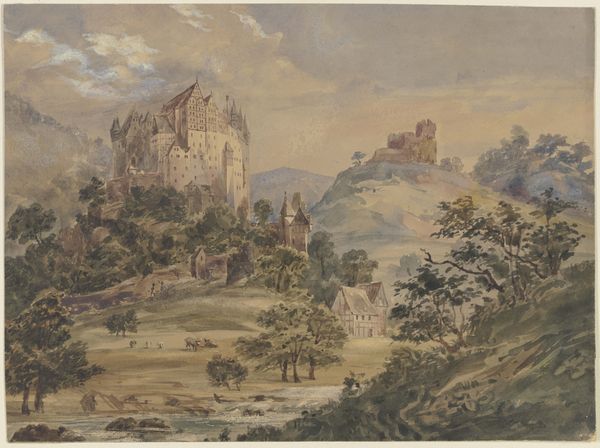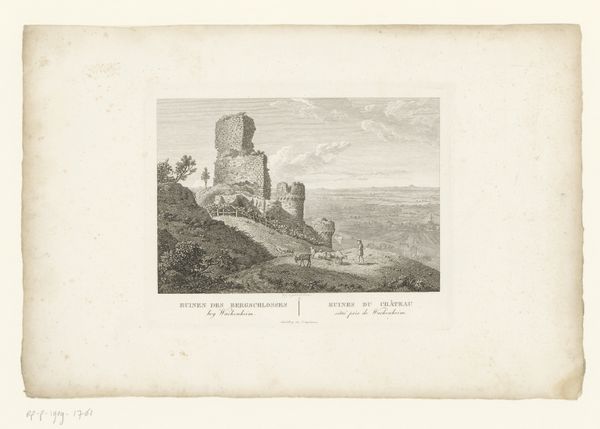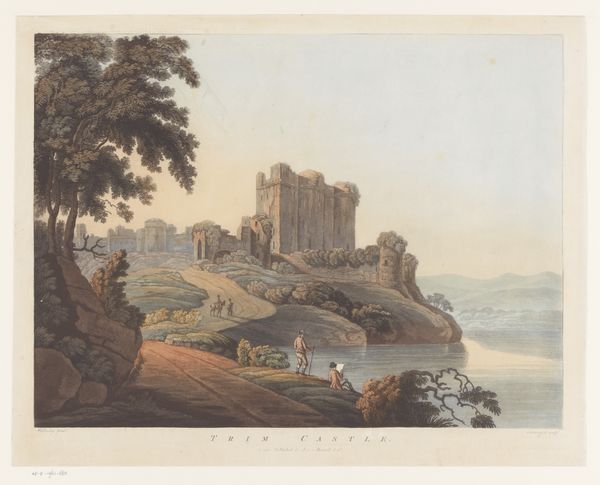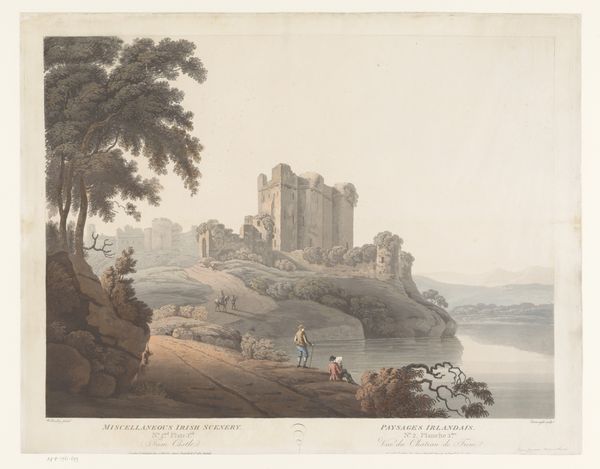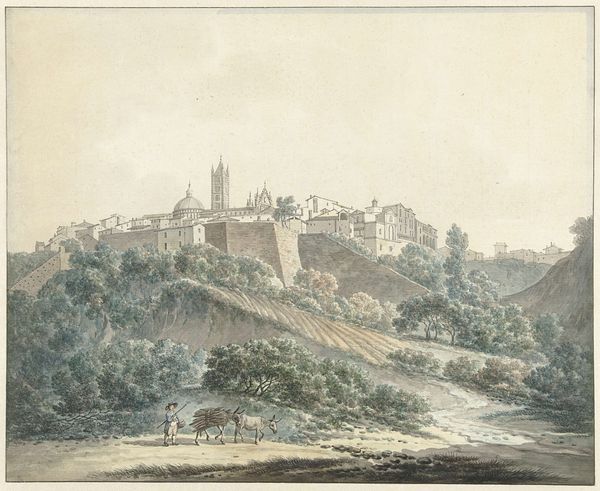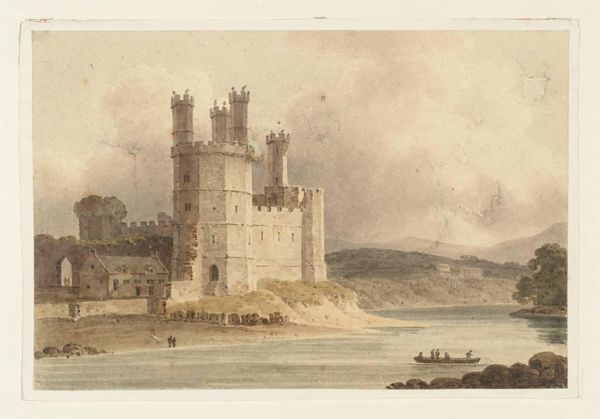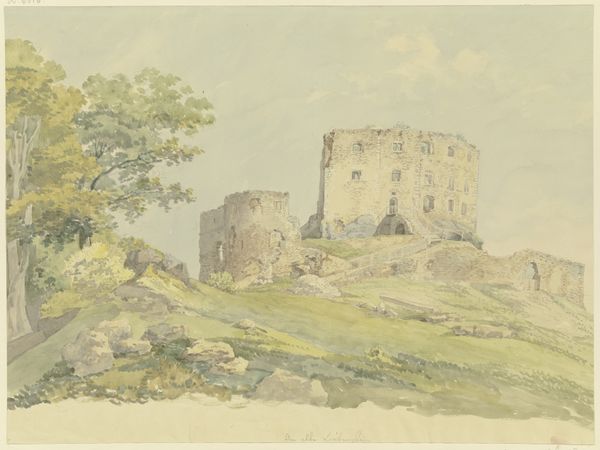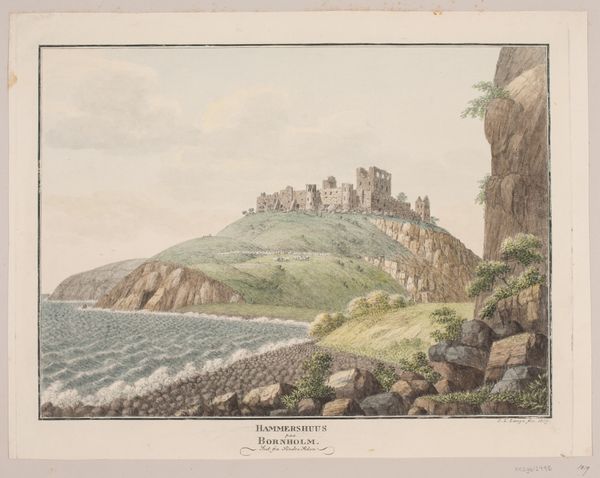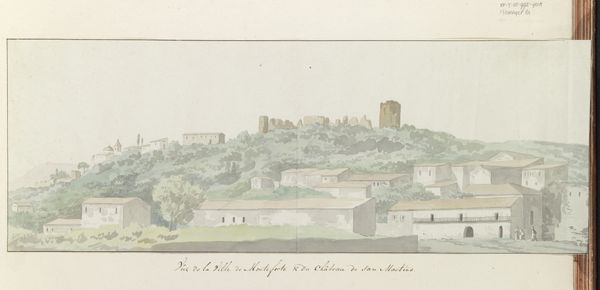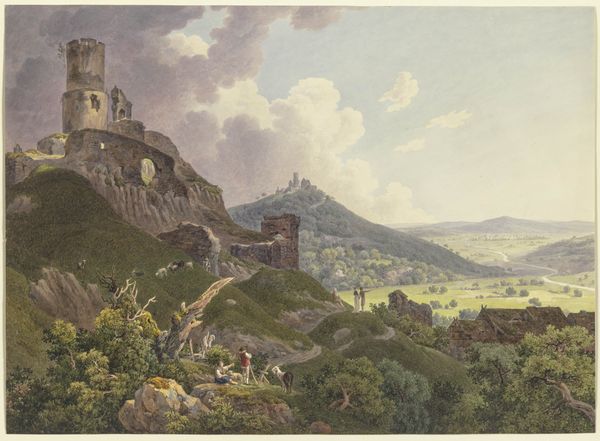
Die Oberburg (Boosenburg) und die Niederburg (Brömserburg) bei Rüdesheim am Rhein 1803
0:00
0:00
drawing, painting, watercolor, ink, architecture
#
drawing
#
neoclassicism
#
painting
#
landscape
#
watercolor
#
ink
#
coloured pencil
#
romanticism
#
architecture
Copyright: Public Domain
Editor: This watercolor and ink drawing, "Die Oberburg (Boosenburg) und die Niederburg (Brömserburg) bei Rüdesheim am Rhein," was created in 1803 by Georg Melchior Kraus. It's quite a detailed depiction of these castle ruins. What do you see in this piece, considering the time it was made? Curator: I see a pointed reflection on the socio-political currents swirling through Europe at the time. Consider that this piece was created during the rise of Romanticism and burgeoning nationalism. Kraus isn’t simply painting ruins; he’s participating in the construction of a national identity. How are ruins typically viewed and presented in artworks, and how does that influence how people see history? Editor: Often ruins are seen as symbols of the past glory or the transience of human achievement, right? This image, with its serene landscape, seems to glorify German heritage somehow. Curator: Exactly! Kraus's careful depiction of the ruins contributes to a particular narrative: one where a romanticized medieval past serves as the foundation for a shared cultural identity. And look at the presence of everyday people in the foreground; they humanize the scene, bridging the gap between the present and the historical weight of these structures. How do you think the decision to include people affects our understanding? Editor: It makes it feel less remote, maybe more…personal? It implies the ruins aren’t just remnants, but part of an ongoing story. Curator: Precisely. This image, viewed through the lens of its historical context, speaks to how art can be mobilized in shaping collective memory and national consciousness. Art like this wasn’t just decorative. It was part of a much larger cultural and political project. Editor: That’s given me a totally different perspective on landscape art; it's not just about scenery. I had no idea it could be so tied to social and political agendas. Curator: And remember, art continues to be a force in constructing and critiquing the narratives we tell ourselves about our past, and our present.
Comments
No comments
Be the first to comment and join the conversation on the ultimate creative platform.
